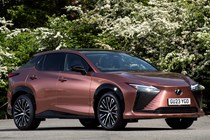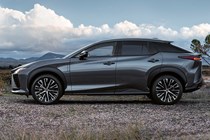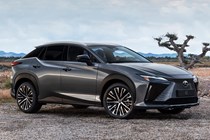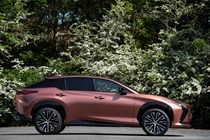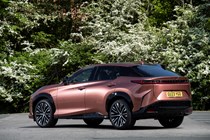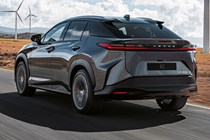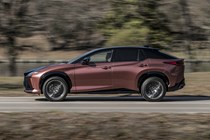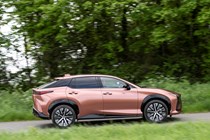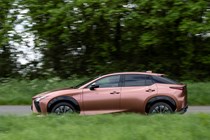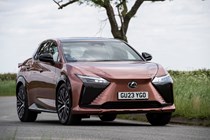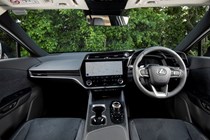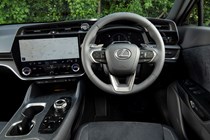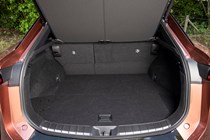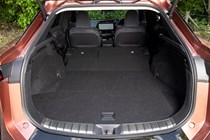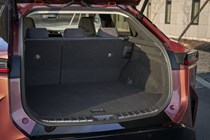
Lexus RZ engines, drive and performance

- Only one power option
- Fast enough for most folk
- Smooth fuss-free acceleration
What power options are there?
The RZ packs 313hp from its twin-motor setup (204hp front, 109hp rear). That’s enough for a claimed 0-62mph time of 5.6 seconds, and on to a top speed limited to 99mph.
As with other electric cars, it offers a smooth power delivery which really suits this well-mannered crossover. It lacks the snap acceleration of a Tesla Model Y but it certainly keeps up with the likes of Hyundai and Skoda.
The power’s also quite nicely modulated, helping you to drive the RZ smoothly as befits its status as a luxury vehicle,
What’s it like to drive?
- Very soft
- Adaptive four-wheel drive
- Yoke steering coming soon
It’s based on the same platform as the Toyoya bz4X, and also uses the same Subaru developed four-wheel-drive system (called Direct4 here) as the Toyota.
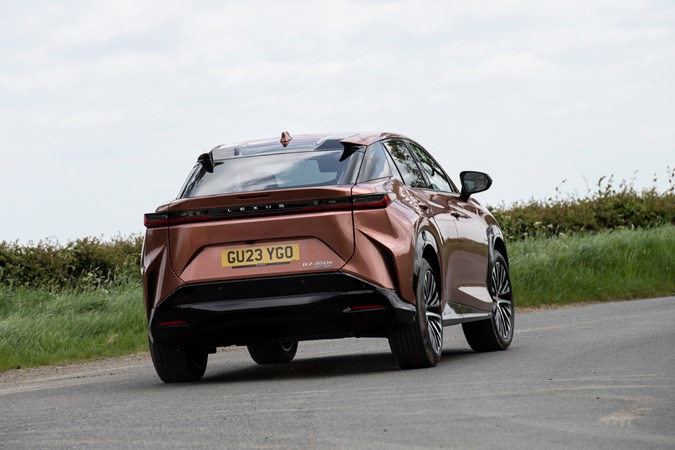
The all-wheel drive system can shuffle power between all four wheels depending on the circumstances. For instance, when it’s in Range mode, it will primarily use the rear wheels to aid efficiency. Whereas in Sport mode, it will use all four wheels to provide power and grip. It can certainly get you out of a tight bend quickly and it’s good fun to throw around in the right circumstances.
On the smaller 18-inch wheels the ride is superb. It soaks up potholes with aplomb and generally does a good job of reducing a road’s annoyances to the occupants. Combine that with a super smooth, near silent power delivery and the RZ feels every bit a Lexus product.
It really suits motorway driving, which is slightly at odds with the electric powertrain, which becomes much less efficient at high speeds. At 70mph it’s nicely stable, feeling more composed in faster driving than around town where it can rock up and down at lower speeds when coming to a stop.
There’s regenerative braking available, controlled by the paddles behind the wheel with four levels of heft. There’s no single-pedal driving mode, though, which is a shame.
The Yoke
There are two conversation points about the yoke, slated to go on sale in 2025. The physical yoke (below) you use to steer, and the technology between it and the wheels.
The former offers 150-degrees of movement, with everything on the wheel – including the indicators – moving with your hands.
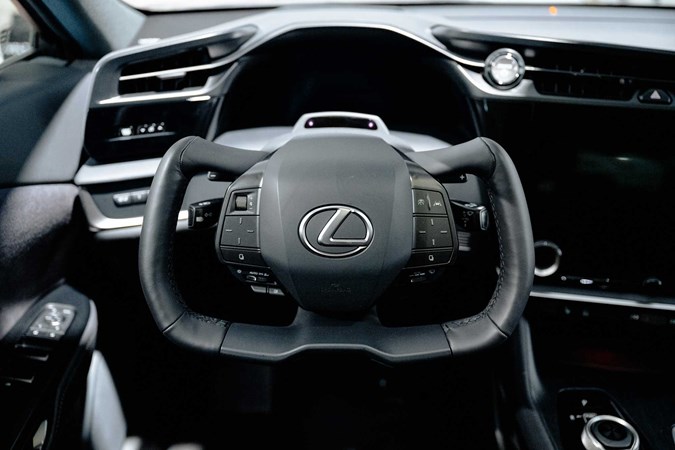
Whereas the associated technology, called steer-by-wire, has two benefits. Firstly, it prevents unwanted vibrations and information from the road surface coming through the wheel and unsettling the driver. Another benefit is that the steering response can be tuned depending on the speed: higher speeds dull response, while lower speeds give you more control.
This is where it differs from the yoke you’ll find in Teslas. The Tesla yoke is linked to an otherwise unchanged steering rack, and so requires the same amount of turns from lock to lock as a regular wheel. Problem is, it’s harder to turn a square yoke like a steering wheel. Lexus’ system will never require a full rotation even at low speeds, theoretically allowing you to keep your hands securely on the wheel at all times.
On the road, it feels stable at high speeds and composed in faster driving. Combine that with smooth electric power delivery and you end up with a surprisingly well-mannered SUV. Long-flowing bends require minimal input, but at lower speeds it takes a bit more getting used to. It feels unnatural, with very little movement needed to get to full lock.


